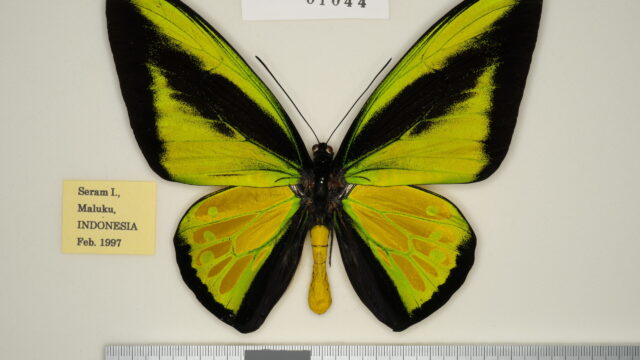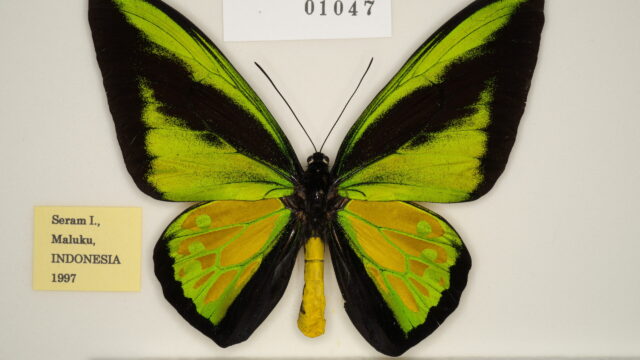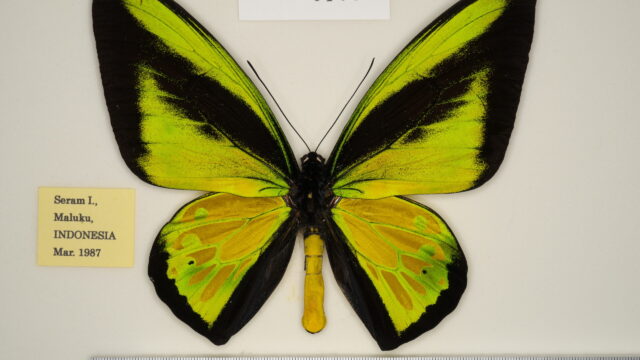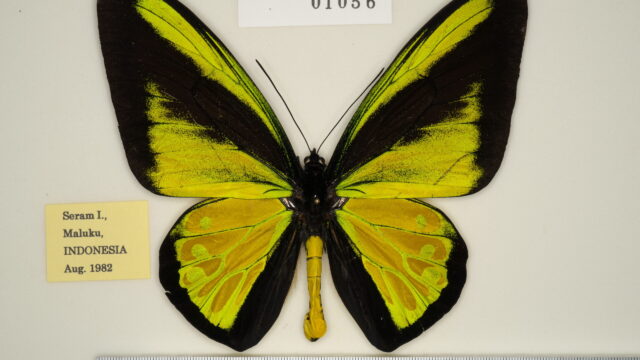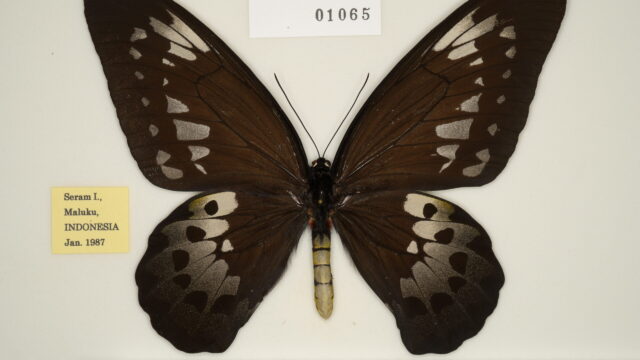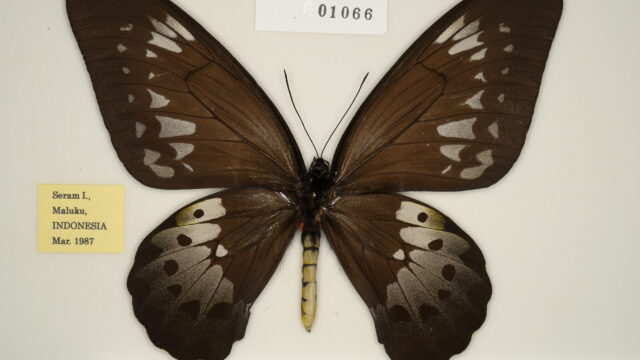- Ssp. procus (Rothschild, 1914)22) [♀] [♂: (Talbot, 1920)27))
(Distribution) [Map 50]
INDONESIA [Maluku] Seram Is. (Kamarian, Makariki, Manusela Mts. (Mt. Binaiya, Manusela, Piliana)
(Episodes of discovery and original description)
Rothschild found in Stresemann’s collections at Ceram Island one ♀ that appeared to be a variant that had been found together with a ♀ of O. priams. However, when he spread the wings, he discovered that it was not a variant, but a new species of the Goliath Species group, which he described as a new species of Troides, procus (Latin for “suitor”), in 1914. Unfortunately, he did not know the exact locality of the collection, so he had no choice but to assign it to the central part of Ceram Island.
On the other hand, the Pratt brothers, who were camping and collecting in the Manusela Mountains (6000 feet) in October-November 1919 at the request of the Hill Museum, collected 3♂♂ at 2500 feet after much difficulty, which was reported by Talbot in the next year. Rothschild’s guess of the habitat was spot on.
(Characteristics)
It is the largest subspecies endemic to Seram Is., the westernmost island in its distribution. Both sexes are easily distinguishable from other subspecies by their distinctive patch-pattern and wing shape.
(Spotted pattern)
♂: Both FW and HW have rounded wing apex. FW with short iridescent green bands due to a broad black marginal border. On HW, the semi-translucent golden spots are also small due to the broad black marginal border and green frame along wing veins. In addition, there is no black spot in the center of green discal spot.
♀: The Wing shape is rounded and huge. The ground color of wings is unique chocolate brown. It is characterized by its large FW spots, but the absence of the cell-spot. On HW, the pale band is extended, and many individuals have a small spot at the apex of the cell. On upper surface there are no yellow color on submarginal area, and only small amount is present on the under surface. The border between the dark outer marginal band and pale band is indistinct by a dense scattering of dark scales.
(Variation)
♂-f. confluenta Schäffler, 200124): [Aberrant FW pattern] The radial and the cubital bands connected distally by scattered iridescent green scales.
♂-f. moustacheus Deslisle, 20042): [Aberrant FW pattern] Melanic individuals having a well-defined moustache-like black band within space 1b.
♂-f. goudreaulti Deslisle & Sclavo, 20083): [Aberrant FW pattern] Blood-red streak present in space 8 of the radial band.
♂-f. nigraocellatus Haugum & Low, 19819): [Aberrant HW pattern] Green discal spots with a black spot in the center of the spot.
♂-f. primitus Deslisle & Sclavo, 20154): [Aberrant HW pattern] Semi-translucent golden patch without any discal green spot, on HW. This form appears to be ancestral to the primitive GenusTroides. (➡samson)
♂-f. jeromei Deslisle & Sclavo, 20083): [FW/HW discoloration] Iridescent areas a light turquoise instead of the typical green color. HW normally semi-translucent golden areas a light buff color. Abdomen very light creamy color instead of yellow.
♀-f. okai Deslisle & Sclavo, 20154): [Aberrant FW/HW pattern] Great enlargement of all pale spots; On FW, the submarginal and the subapical ones coming connected with respective discal ones. Pale cell-spot present. HW pale band is more extended within the cell up to costal space. All dark discal spots smaller.
♀-f. albopuncta Ohya, 198317): [Aberrant FW pattern] Presence of white spots within FW cell.

